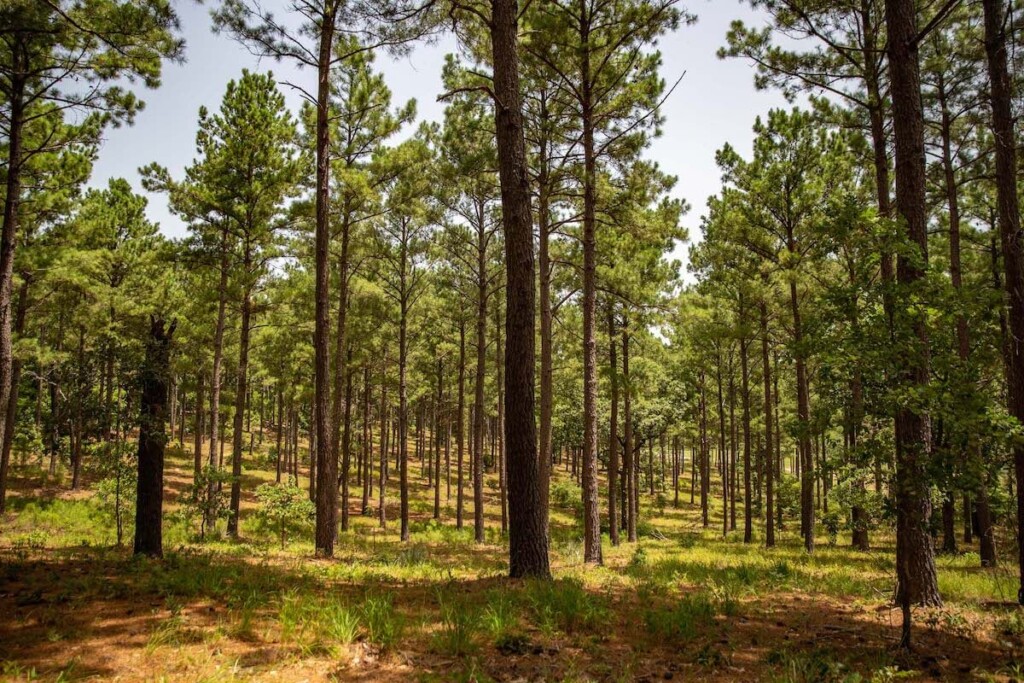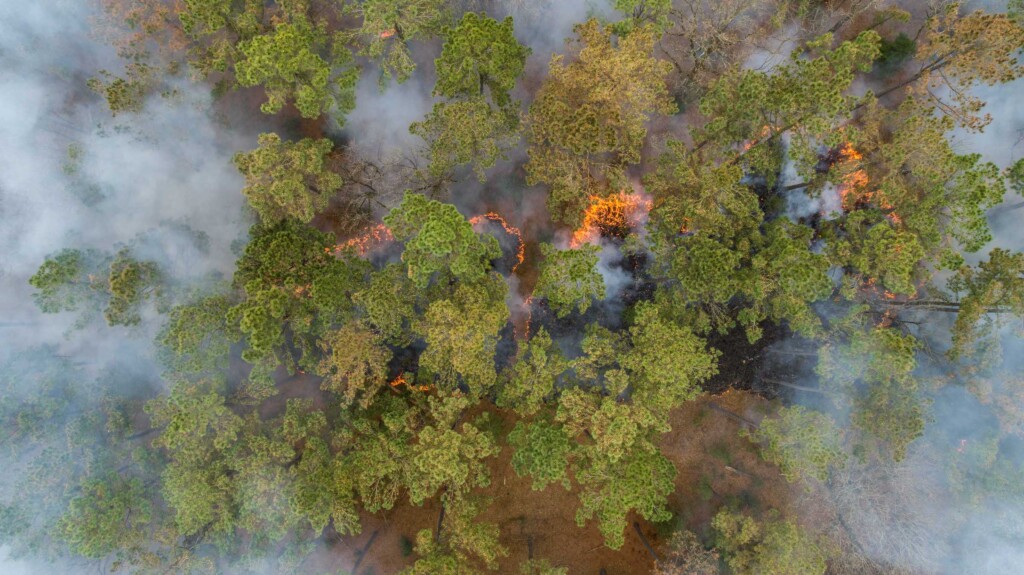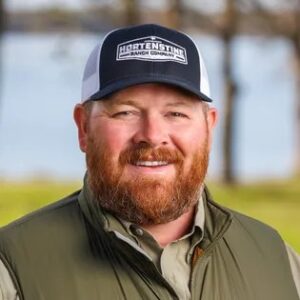It doesn’t get much better than winding through a mature stand of timber with a healthy understory and a slight char on the bottom of the trees. These are all signs of a properly managed timberland reaping the benefits of prescribed fire. If unfamiliar with the term, by definition, prescribed fire is a planned fire; it is also sometimes called a “controlled burn” or “prescribed burn,” and is used to meet specific land management objectives. It is the most common technique used by the National Parks Service to create diverse habitats for plants and animals, help endangered species recover, prevent destructive fires, and more. Private landowners, too, use prescribed fire in many ways to manage the landscape across their ranch. Fire can reduce unwanted tree and shrub cover, allowing desirable successional vegetation to grow. This new growth provides nesting cover for turkeys and fawning cover for deer while benefiting birds, reptiles, amphibians, insects, and dozens of other species. Furthermore, prescribed fire promotes grassland and timberland health and is cost-effective. While its benefits are far-reaching, this article focuses on using fire to help manage timber stands.
Benefits of Prescribed Fire on Timberland
When burning a mature timber stand, you are accomplishing several things. First, fire helps mature pine and hardwood timber grow more effectively by getting rid of undesirable competition such as cedar, sweetgum, yaupon holly, and many invasive species often found within a timber stand. Removing the competition allows more nutrients for your target. Secondly, fire removes the thatch of pine straw or leaf litter accumulated over the years. Understories like the one below are desert-like.

A burn in this stand will reveal a dormant seed bank of desirable vegetation that is just waiting to sprout and provide nutrients for timber with forage and cover for wildlife. According to the Natural Resources Conservation Service (NRCS), cool-season prescribed burn locations documented 22% higher protein levels in beautyberry plants in the spring and 37% higher in the fall.
Value of Prescribed Fire
Over the years we have seen many landowners that are intimidated by fire, but knowing the proper way to execute a prescribed burn can make your property come alive in ways that only fire can achieve. Countless articles and resources have been published on this topic, but as ranch real estate professionals we bring you a unique perspective on VALUE. Controlled burns not only can increase the prosperity of the native plant community and timberland on your property, but they can also increase the value of your property. When evaluating the price of a timbered property, in most cases, more value is given to properly managed timberland. If stands go unmanaged for too long, they will end up becoming a cost that a new buyer has to deal with, which in the end, can affect the sales price of your property. It is much more cost-effective for a landowner to keep up their management practices with an established burn regiment rather than re-establishing them every 5-7 years. Remember, “An ounce of prevention is worth a pound of cure.”
Pre-Burn Keynotes
Before implementing a prescribed fire, it is worth mentioning that setting goals for your property is a crucial first step. Goals will guide you on how, when, and at what frequency to burn over time. For example, wildlife managers who prioritize wildlife often leave designated areas unburned. These strategic pockets of thick underbrush assure good cover for wildlife and keep them on-site year-round.
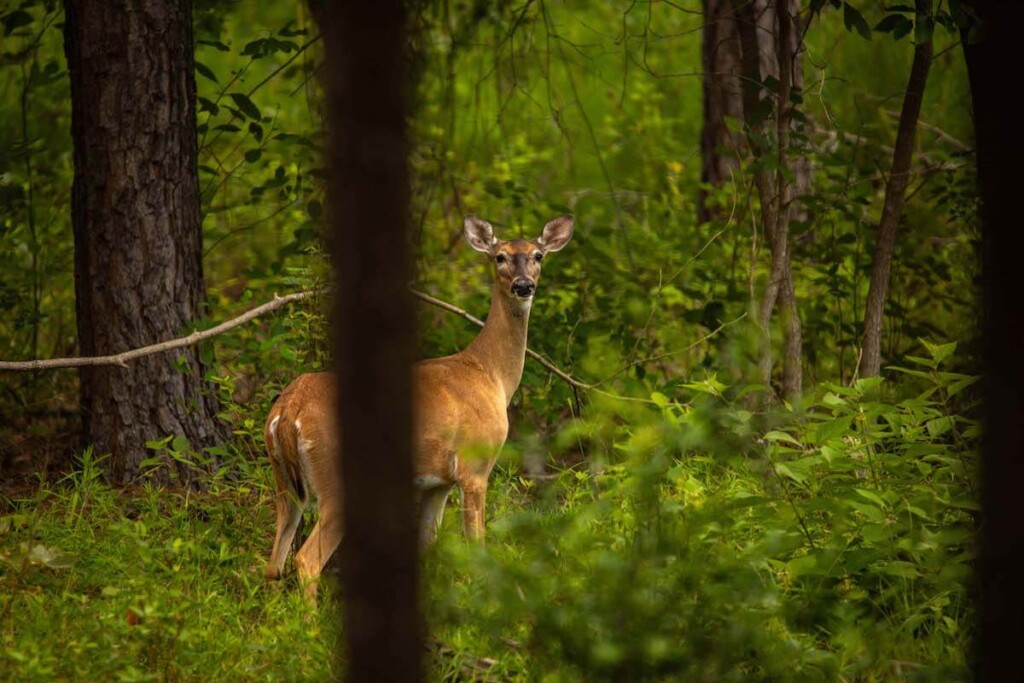
Also, before executing a fire, it is equally important to emphasize that even though it is an effective land management technique, it is not a one-stop-shop. However, when used on a rotational basis with other management practices, it can become one of the most potent tools in your management plan. An example of this would be using fire in conjunction with proper thinning techniques. Proper thinning prior to the burn ensures adequate sunlight can make its way to the forest floor and maximize new successional growth after the burn. This is when your timber stands and wildlife will truly benefit from your burning efforts.
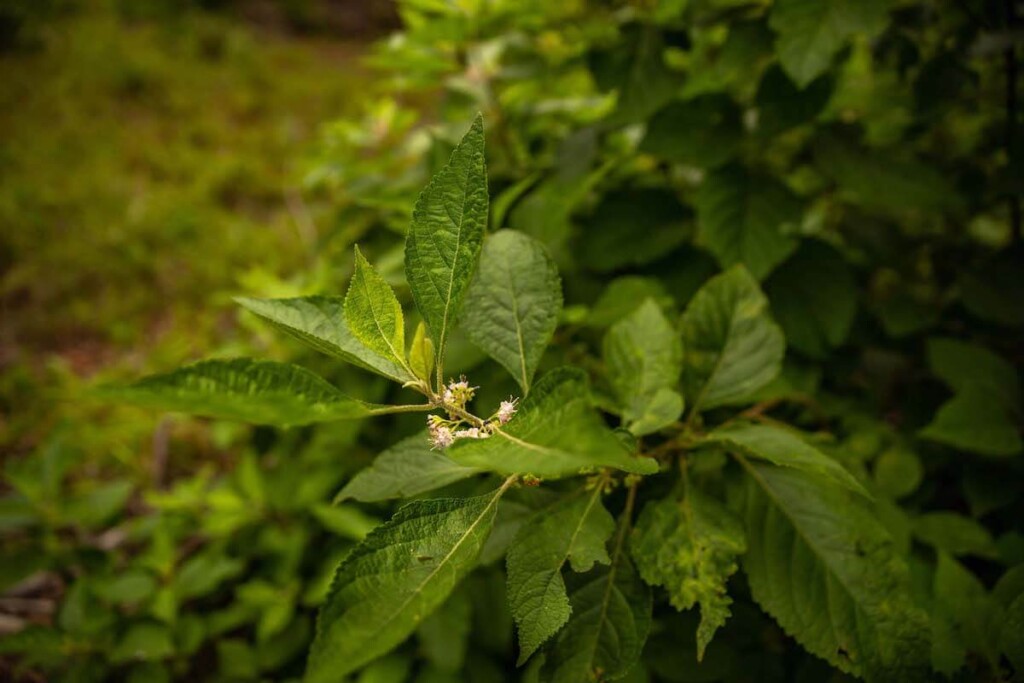
Preparing the Burn Site
To conduct a prescribed burn on your property, you must keep safety as your number 1 priority. Having a professional forester and burn team in place is a must. At HRC, we rely on these professionals and connect them with our clients to ensure they not only get their money’s worth but that their land and their neighbor’s land remain protected during the process. Once your team is in place, the forester can coordinate with the state forestry department and local officials to notify them of the burn. Conditions are what drive the day and time of the burn. The humidity, wind, and temperature all play a role in when your team conducts the burn. If conditions are unsuitable, postponing the burn is necessary until they are all in place.
Once the conditions are right, the preparation of the site is the next step. Fire breaks must be in place to stop the fire strategically. Fire breaks are achievable with a small tractor and a disc or a dozer. Creeks, roads, and open fields are also usable as fire breaks, but establishing a line of plowed soil to meet the fire is usually the best insurance. Setting up these breaks before the burn team arrives maximizes your time with the team, increasing efficiency and effectiveness.
Clearing these fire breaks of debris and providing a smooth lane can also aid in the team’s ability to quickly access different portions of the property with ease during the burn. A vital step of effectively burning property is to have breaks in place around the boundary lines to prevent the fire from jumping across property lines. Also, depending on the scenario, it’s usually good to rake around desired trees, structures, or features on the property to keep them from being charred.
Communicating the Burn Plan
Once the site preparation is complete, having a plan and communicating that plan amongst the team is imperative. Several property maps should be ready to hand to each team member so that everyone is on the same page. The map should orient direction and show where the burn will travel and the emergency exits as well. Make sure that everyone knows their role. To ensure things go as planned, each team member has a job and communicates before setting the first burn line.
This is where hiring a professional burn team is one of the most critical aspects of success. These professionals know the routine and know each other. They’ve done this many times before and likely already have a plan and the manpower in place. They achieve the best results and even after the fire is complete, the return to execute a postburn survey. This survey reports the effectiveness of the burn, which determines charges for their service. Most professionals charge for burned acreage only.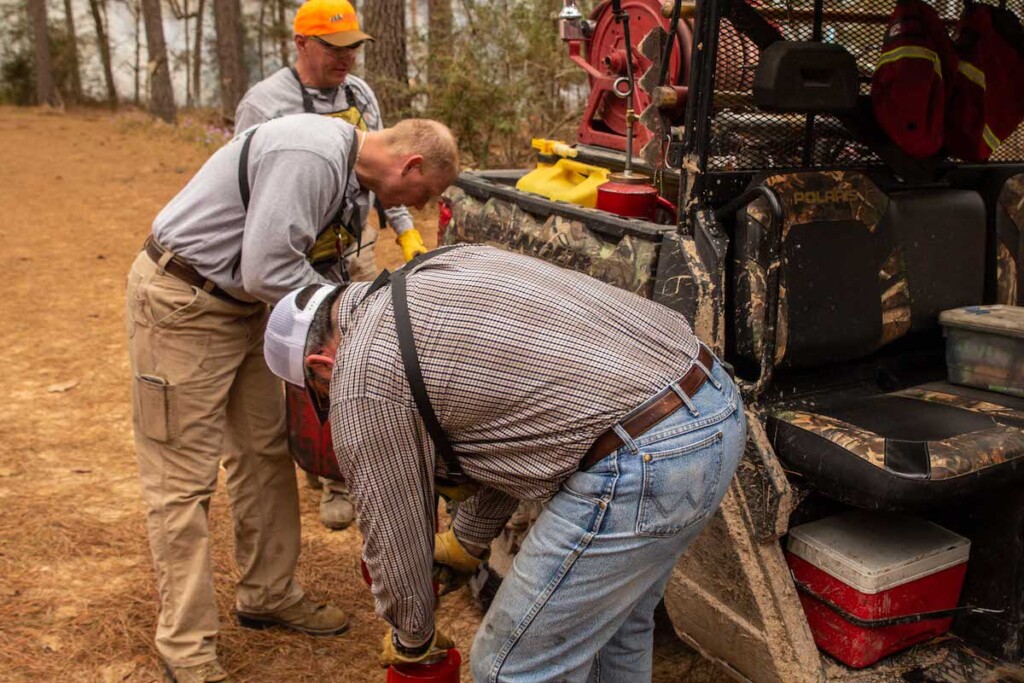
When asked about prescribed fire, forester Chris Adams with Vision Forestry knows timber and fire, but he also knows his limitations. Implementing fire on a large tract of land is not a one-man show. Chris depends on the help of professional burn teams to conduct these fires and bring a higher value to his clientele.
“Prescribed fire, when utilized under the right conditions, is a very effective tool in the forest management toolbox. Not only can prescribed fire aid in reducing wildfire risk, but it also provides value through improving forest health, wildlife habitat conditions, and overall aesthetics of the forest. It is important to know that prescribed fire is much more than just lighting a match. It requires experience, knowledge of fire ecology, and an understanding of the safety requirements for the forest and yourself and your neighbors. Using a professional/certified burner who has the necessary skills and insurance is key to not only a successful and safe burn but also utilizing this management tool effectively.” Chris states.
Methods of Burning
Now that the stage is set and a team is in place, it’s time to burn. There are several ways to burn a timber tract properly. One way is to light a backfire. This method is relatively slow-moving and usually consumes fuel more thoroughly than the other methods. Other methods include lighting separate burn lines simultaneously to burn into the backfire, and lastly, a flanking fire.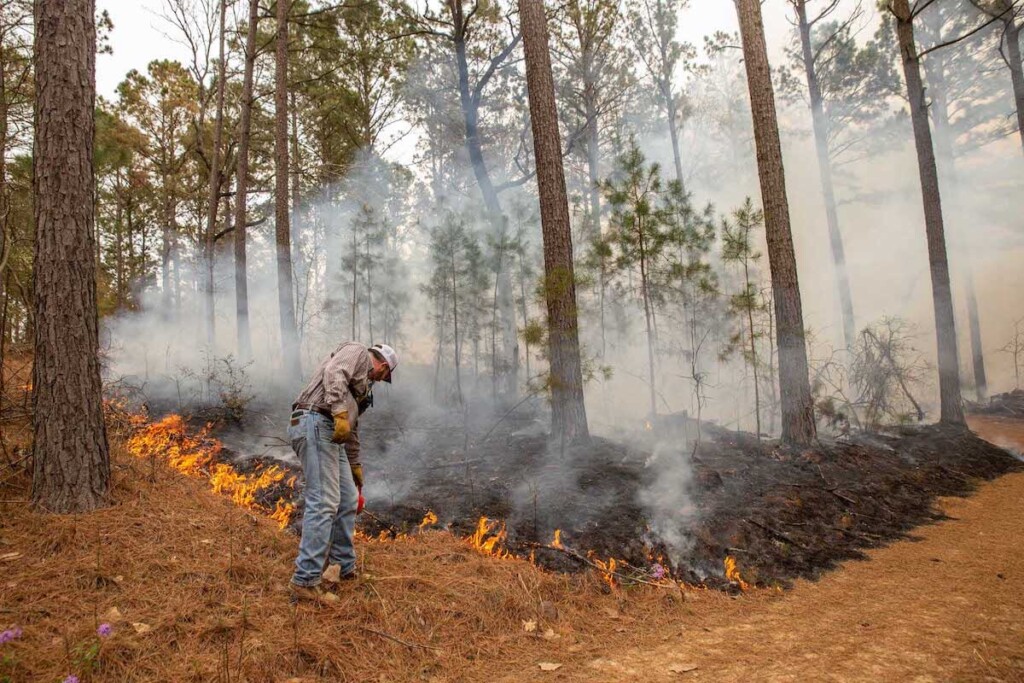
Again, your forester will be able to recommend which method is best for your property with the right conditions. It is never recommended for a landowner to take on a controlled burn solo. Having the right professionals in place and adequate help is always important. Team members should wear proper protective equipment, be armed with water, tools, and have an emergency plan if things do not go as planned. You never know when conditions will change, and if they do during a burn, it is best to change your approach or postpone the burn.
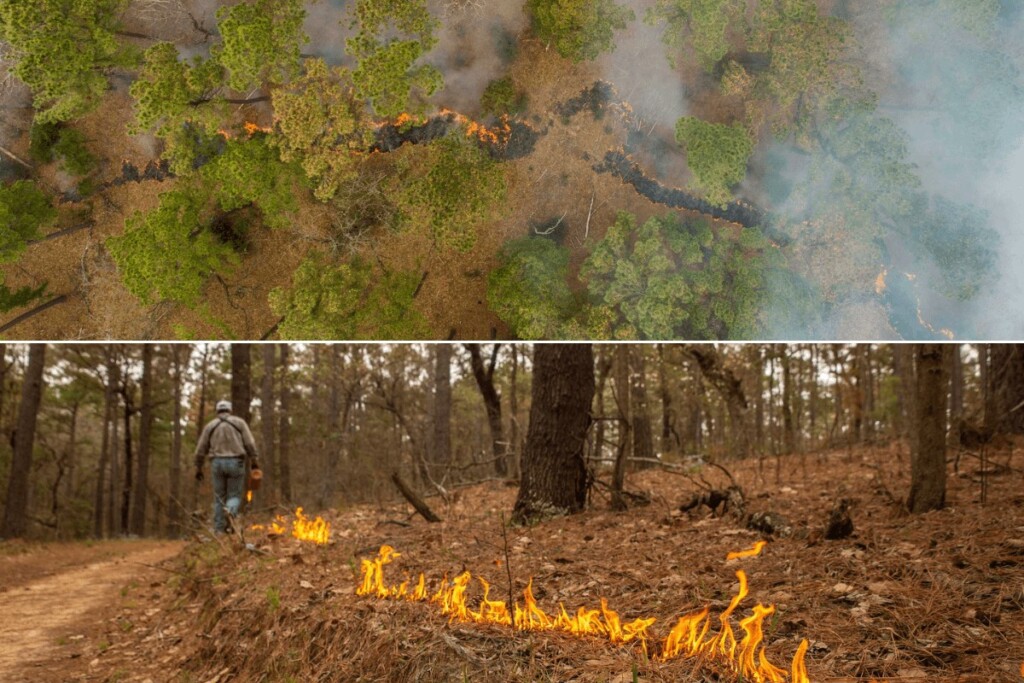
Common Concerns of a Prescribed Burn
At Hortenstine Ranch Company, we have implemented burns on properties that we’ve consulted for and sold, and we often come across landowners with similar concerns. Will the fire drive my wildlife away? Will the smoke be dangerous for neighbors or nearby residents? Will the fire kill desired species such as dogwoods, maple, and other aesthetically pleasing trees enjoyed during different times of the year? There are answers and precautions for each of those. These concerns are where having a professional forester will help.
Wildlife will flee in the presence of fires, but as experience has shown, they are the first ones back after a fire. See the photos below where deer and turkey returned to this feeder within 24 hours of our burn last spring.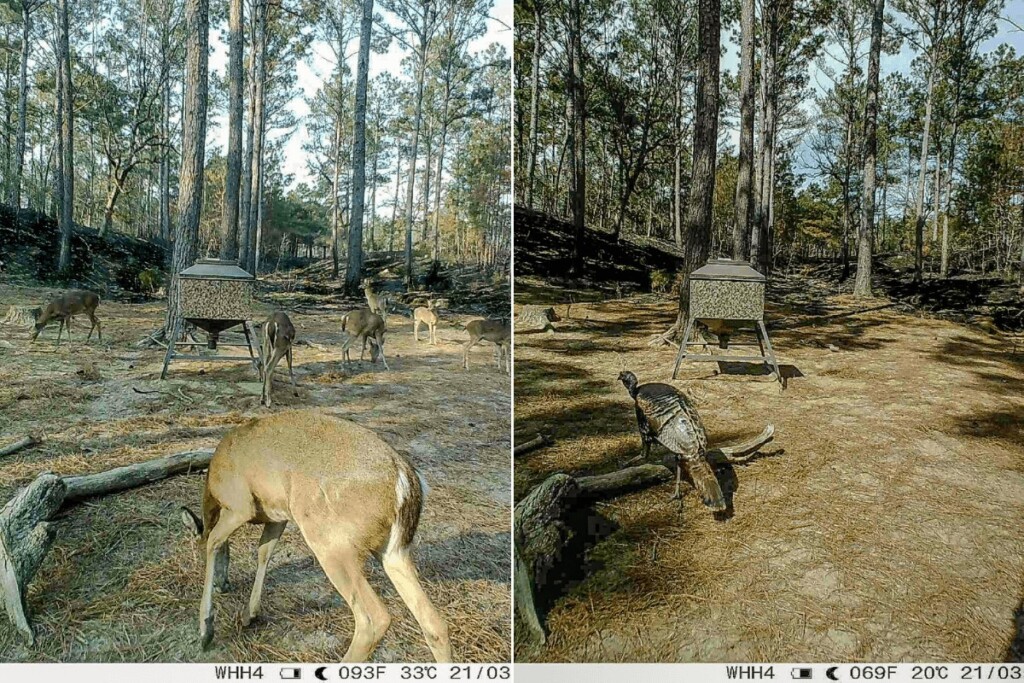
As for the smoke, this goes back to having the right conditions. Burning produces smoke, but burning with the correct method and under the right conditions will ensure that the smoke is tolerable and not long-lasting.
As for killing preferred plant species such as dogwood and maples, raking and spot fire ignition can help maintain these smaller desirable species. Depending on your goals, if you want to keep these trees free from scorching, it’s best to rake around individual plants to keep the fire away and keep it from burning the cambium of that tree. These species, if mature enough, are usually plenty hardy to withstand a proper burn. Again, consult with your forester, and they’ll match up the proper method for your property.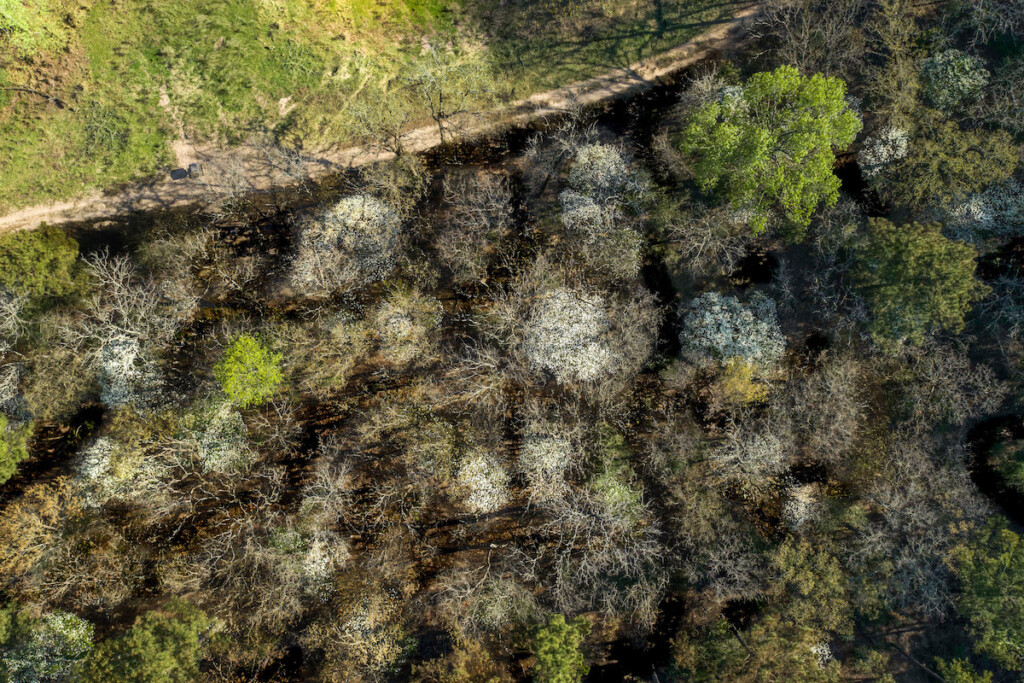
Post Burn Results
Once the smoke has cleared and the forest resumes day-to-day activity, it’s best to survey the results. Did your trees experience any scorch? Did the undesirable species burn to the level desired? Are there any hotspots remaining? How many acres actually burned? Walking the property with your forester and using a drone to get a bird’s eye view is best to observe the results. Make notes of these results and use these to help you plan your next burn. If you desire to transform your timber stand into a lasting legacy for your family and wildlife alike, consider consulting with a forester about how prescribed fire can work for you.
Author: Stephen Schwartz
